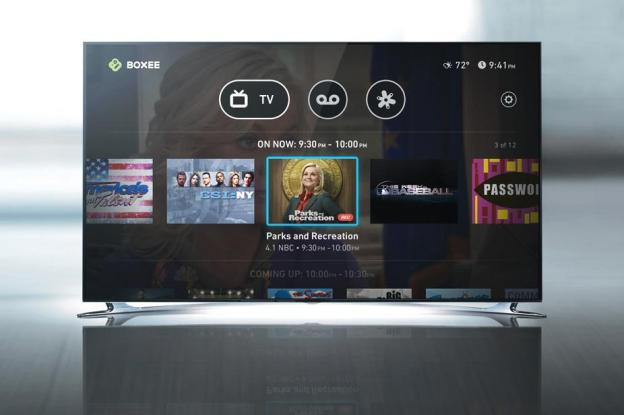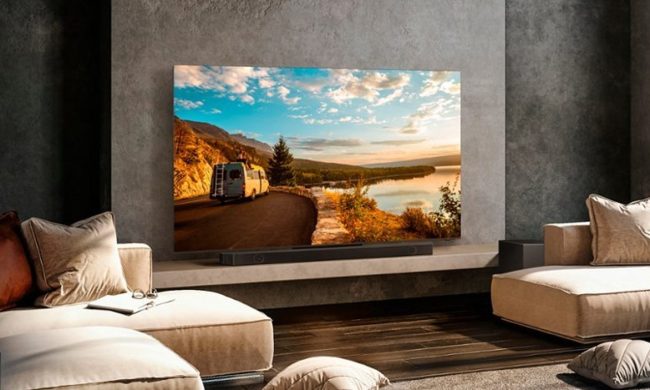
For Samsung, $30 million is probably just a drop in the proverbial bucket, but spending that cash to acquire Boxee and bring in all 45 staff members is an investment — and perhaps an aggressive move to improve what it can offer consumers in the living room by taking on Apple TV and Roku.
Boxee has always been a software company first, with a particularly keen eye for aesthetic user interfaces and user-friendly content delivery. Much of Samsung’s success on the mobile front is based on Android, but the open-source operating system doesn’t carry over to the company’s TVs. Instead, Samsung’s smart TVs are a mix of homegrown UI and a smattering of apps that many consumers probably don’t think about – or use – very much.
The question is whether Samsung will incorporate Boxee’s user interface into its smart TVs, or launch a new set-top box.
When Boxee was founded in 2007, its staff wanted to create home theater PC software that aggregated content stored locally on the computer along with video pulled from the Web. It was unique for its time, and it established something of a cult following as it progressed.
The Boxee Box was designed to be the pinnacle of that vision, with a D-Link-manufactured box running an improved version of the Boxee software. After an 18-month period of support, firmware updates just stopped coming, leaving the vaunted box in a state of limbo. Since then, Boxee moved to creating the Boxee TV, only to then rebrand it months later as the Boxee Cloud DVR in early 2013. The acquisition effectively kills access to that service on July 10.

While the Boxee Box treaded towards outward abandonment, competitors carved out their territory, with the Apple TV and Roku becoming the go-to media streaming set top boxes on the market. Small, robust and customizable (though not always legally), the two small boxes have quietly changed the living-room experience, possibly doing more to cut the cord to cable than Boxee ever imagined it could when its marketing language briefly spurred consumers to do just that.
Not enough cable-free pioneers answered the call, and so Boxee was stuck looking for new funding to ostensibly work on improving the Boxee Cloud DVR, or venture into something a little different. We don’t know for sure, but Samsung will likely look to leverage the brand, win over Boxee loyalists and then go after the masses with something other TV and set top box manufacturers can’t deliver.
The question is whether Samsung will incorporate Boxee’s user interface into its smart TVs, or launch a new set-top box that will compete directly with Apple TV and Roku.
Regardless of the direction, Samsung has an industry-wide issue to contend with: Consumers just aren’t getting into smart TVs.
Ironically, the precedent for this two-pronged approach comes not from Apple or Roku, but Samsung’s Korean rival, LG. As manufacturers were trying to sell the idea of connected TVs over the last few years, LG came to market with the Smart TV Upgrader, a small box that connected directly to the TV via HDMI and to the Internet through Ethernet or Wi-Fi. It was basically LG’s smart TV UI in a box, and it was meant to be agnostic, working with any TV that didn’t have any smart TV features or even Internet connectivity. With apps, access to movies and shows, plus limited integration with mobile devices, it was expected to be a great deal at a $130 price point.
It didn’t turn out that way. Mention the LG Smart TV Upgrader to the average consumer and you’re likely to receive a blank stare. The problem with the box wasn’t its size or price, it was that it didn’t offer a great experience or useful integration, something both Samsung and Boxee tried to overcome themselves. LG acquired the fabled webOS platform from HP as a potential foundation for a new smart TV interface, but the fruits of that effort have yet to be seen on store shelves.

Where LG failed, Samsung wants to succeed — desperately. The company is already in the process of building its own ecosystem to rival Apple’s, pushing out its own apps and features on smartphones, tablets and smart TVs to get them all talking to each other. The issue is that this nascent walled garden isn’t a good place to be in its current state, particularly when it doesn’t look as good as it should, and the cost for entry is a little steep.
Apple’s AirPlay streaming protocol is popular because it directly connects a Mac or iOS device directly with a TV (via Apple TV) or home theater system that supports it. Incidentally, the Boxee Box was also AirPlay enabled, allowing for audio and video to be streamed to a TV directly through it. Would Samsung want to include such a feature into a new Boxee set top box, or will it pack in Intel WiDi and DLNA instead, to keep with the PC/Android focus of the company’s varying products? You can bet on the latter, if a box is indeed part of the plan.
Swallowing up Boxee may be Samsung’s pre-emptive move to counter what Apple has in store.
In April, Roku announced it had sold 5 million boxes since its first model in 2008. Apple had sold 5 million of its “hobby” Apple TV in its 2012 fiscal year alone. Boxee never released sales numbers for the Boxee Box, so it’s not clear how many were moved in total. The last confirmed number from D-Link one year ago claimed 200,000 units sold, lagging well behind the other top competitors.
Samsung hasn’t released exact sales figures for its smart TVs, but the market as a whole is expected to expand 55 percent to 141 million smart TVs sold worldwide in 2015, according to iSuppli. With Samsung being among the top manufacturers, a solid chunk of those bear the company’s logo and software. Not one TV manufacturer, including Samsung, has been able to emerge as a frontrunner, much less lead the pack in any meaningful way. This is a major reason why rumors have run rampant on Apple coming out with its own flat-panel TV product to address the confusion in the marketplace.

That hasn’t happened yet, and swallowing up Boxee may be Samsung’s pre-emptive move to counter what Apple has in store. The company has made a dramatic impact in the mobile space with its Galaxy products, but hasn’t quite done the same in the living room, a battleground still very much up for grabs. Boxee also couldn’t make a lasting impact, and it soon struggled with its identity.
At CES in January, Samsung claimed it was “re-inventing” the TV’s home screen by focusing on five core app tiles that were more reminiscent of mobile devices. There would be support for Android tablets, as well as iOS devices, and a renewed focus on apps and social networking to create a more seamless second screen experience.
The irony is that this was Boxee’s vision back in 2010, for the most part, before it switched gears, except it never integrated mobile devices very well, nor included social networks in a serious way. It could play a wide range of file formats before other boxes could, tap into streaming content from a range of sources and present it all in an interface that was nice to look at and easy to navigate — all of which Samsung has struggled mightily with since first introducing smart TVs.
There’s no telling if the Boxee brand will survive past this point, or even if Samsung will remake its interface using the staff’s expertise, but paying $30 million to acquire everything Boxee offers is probably a lot less than the money spent on creating a smart TV platform that few consumers seem to notice.



